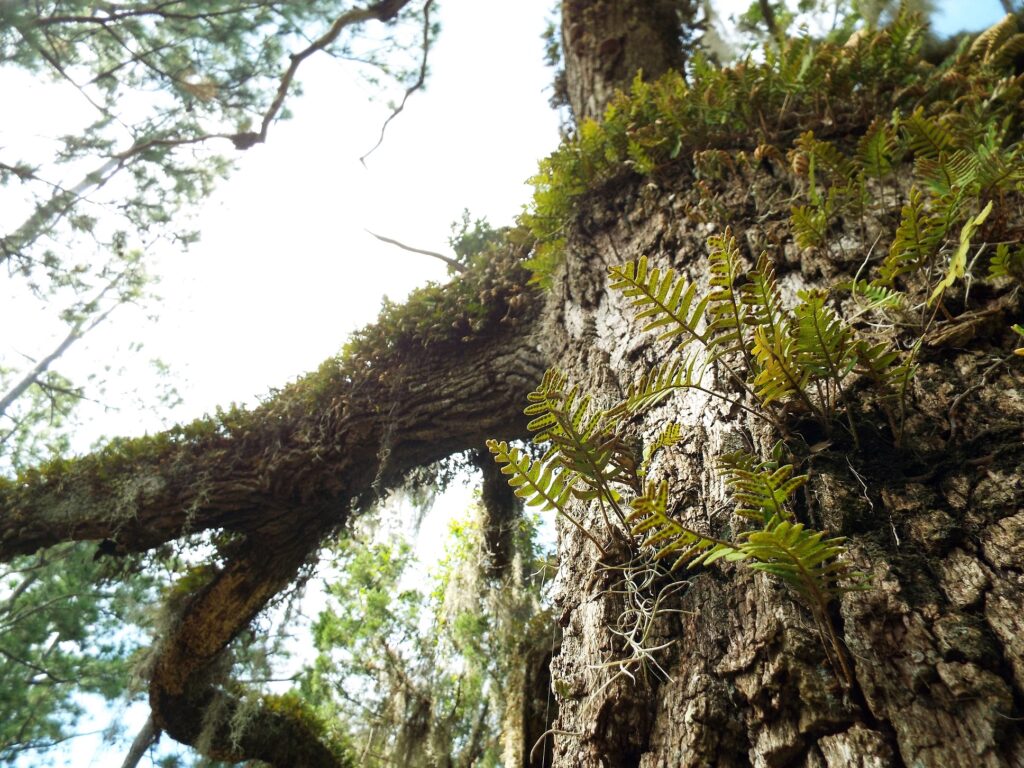


This week for Flora and Fauna Friday, we have a Lazarus-like epiphytic fern, Resurrection Fern (Pleopeltis michauxiana).
Resurrection Fern is found throughout the Southeast. Its preferred habitat is humid hardwood forests. However, you won’t find this fern amidst the grasses and asters of the forest floor. You must shift your gaze upward. Resurrection Fern is an epiphyte. An epiphyte is a plant that grows entirely on the surface of a larger plant. Epiphytes are different from species like Mistletoe. Mistletoe steals water and nutrients from within the tree, harming it directly. Epiphytes don’t harm their host directly. They get all of their water and nutrients from the air and whatever gets trapped on the bark of a tree. (Spanish Moss is an epiphyte too.) Resurrection Ferns are a common sight blanketing the Atlas-esque boughs of the Live Oak or cradled in the creases of the Bald Cypress’s buttress. This fern forms a thick mat of roots along the bark of Live Oaks, enveloping the tops of limbs in a feathery shag carpet. These root mats can be peeled off the bark and transplanted to other trees. Like other Ferns, Resurrection Fern disperses its offspring with windblown spores, taking hold on wet tree bark.
What makes Resurrection Fern special and gives it that common name, is its remarkable ability to survive prolonged periods of drought. For epiphytes, water can be hard to come by if it doesn’t rain. To resist the whims of the weather, Resurrection Fern has developed the ability to survive desiccation. The plant simply allows itself to dehydrate as its water supply dries up, putting the plant in a metabolic stasis. These Ferns typically lose about 75% of their water content during short droughts and can even survive losing over 95% of their water! For perspective, when making beef jerky, beef loses 75% of its water content and when making raisins, grapes lose 80% of their water content. That’s pretty parched if you ask me! As Resurrection Fern dries, the leaves turn brown and curl upward, exposing their undersides. This curling helps prevent further water loss and presents the absorbent underside of the frond to any incoming rain. Following a rainstorm, the plant will fully revive within a day!